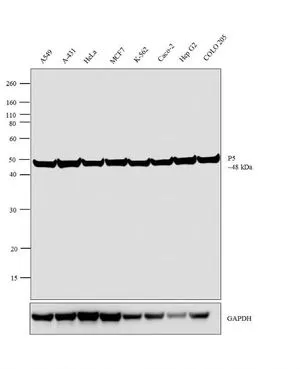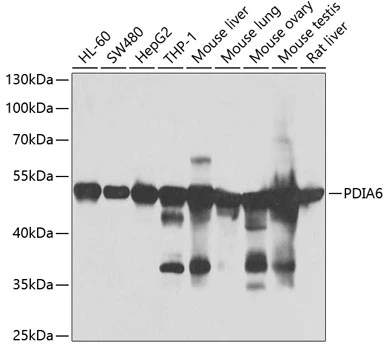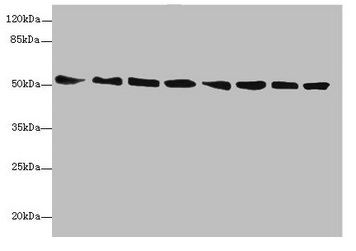PDIA6 antibody [N1N3]
GTX121275
ApplicationsImmunoPrecipitation, Western Blot, ImmunoHistoChemistry, ImmunoHistoChemistry Paraffin
Product group Antibodies
TargetPDIA6
Overview
- SupplierGeneTex
- Product NamePDIA6 antibody [N1N3]
- Delivery Days Customer9
- Application Supplier NoteWB: 1:500-1:3000. IHC-P: 1:100-1:1000. IP: 1:100-1:500. *Optimal dilutions/concentrations should be determined by the researcher.Not tested in other applications.
- ApplicationsImmunoPrecipitation, Western Blot, ImmunoHistoChemistry, ImmunoHistoChemistry Paraffin
- CertificationResearch Use Only
- ClonalityPolyclonal
- Concentration1 mg/ml
- ConjugateUnconjugated
- Gene ID10130
- Target namePDIA6
- Target descriptionprotein disulfide isomerase family A member 6
- Target synonymsERP5, P5, TXNDC7, protein disulfide-isomerase A6, ER protein 5, endoplasmic reticulum protein 5, epididymis secretory sperm binding protein, protein disulfide isomerase P5, protein disulfide isomerase-associated 6, protein disulfide isomerase-related protein, thioredoxin domain containing 7 (protein disulfide isomerase), thioredoxin domain-containing protein 7
- HostRabbit
- IsotypeIgG
- Protein IDQ15084
- Protein NameProtein disulfide-isomerase A6
- Scientific DescriptionProtein disulfide isomerases (EC 5.3.4.1), such as PDIA6, are endoplasmic reticulum (ER) resident proteins that catalyze formation, reduction, and isomerization of disulfide bonds in proteins and are thought to play a role in folding of disulfide-bonded proteins (Hayano and Kikuchi, 1995 [PubMed 7590364]).[supplied by OMIM]
- Storage Instruction-20°C or -80°C,2°C to 8°C
- UNSPSC12352203
References
- Tsuchiya Y, Saito M, Kadokura H, et al. IRE1-XBP1 pathway regulates oxidative proinsulin folding in pancreatic β cells. J Cell Biol. 2018,217(4):1287-1301. doi: 10.1083/jcb.201707143Read this paper






